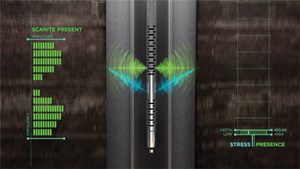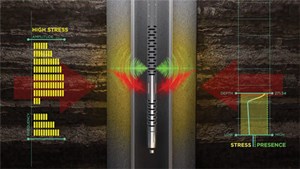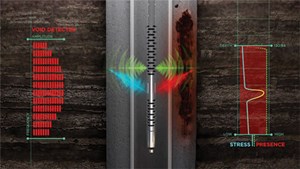In my February 2021 column, I indicated that I would start presenting some nanotechnologies I had run across that had valuable applications in the oil & gas industry. I’m continuing that path this month, discussing two novel ideas regarding cement.
I’m going to focus on a company headquartered in Honolulu, Hawaii (with offices in Houston, Texas)— Oceanit Laboratories (www.oceanit.com). These folks are extremely clever, when it comes to developing industry-focused technologies that can be implemented quickly in the field. We’ll start with a product called NANITE™.
Nanite development began in 2009, in partnership with the U.S. Department of Defense (DOD). Nanite is nanoparticles that change electrical properties when “squeezed.” When mixed into a conventional concrete mixture, these nanoparticles transform it into a “smart cement/concrete” that is able to monitor the forces being imparted on the concrete. The inherent sensing capabilities of Nanite are accurate and high-resolution, allowing one to measure forces like weight or wind loads and even early detection of failing integrity.
Other development directions included “weigh in motion stations,” being able to continuously monitor axle weights on roads and bridges. Taking that concept further, the health of concrete beams used in bridges could be monitored for their integrity. You can learn more about Nanite at www.oceanit.com/products/nanite.
When a clever group of well construction folks heard about this technology, they challenged Oceanit to come up with a way to use Nanite smart sensing particles in oilwell cement, for use in primary cement jobs, but for purposes throughout the life of the well.
Upon initial evaluation of this application, Oceanit realized that the Nanite technology was untenable, because there would be no way to retrieve Nanite electrical signals from downhole. They went back to the drawing board and invented a similar metamaterial that changed acoustic properties with increased loading—Scanite™.
SCANITE™ particles can be produced in a wide range of densities to achieve neutral density with diverse cement slurries. When combined in cement slurry, the resulting cement sheath “suffers” a sonic attenuation. The Scanite particles create sound transmission loss of various magnitudes at specific frequencies, when incorporated in a cement matrix.
This attenuation can be measured in-situ, using conventional sonic cement evaluation tools, such as a Variable Density Log (VDL), as shown in the illustrations on this page. Standard VDL tools are 20-25 kHz center frequency, but Scanite can be reactive in even broader frequency ranges, to give acoustic feedback on the cement’s health.
So, why use Scanite Smart Cement? The need to prove well integrity is the principal reason. Using cased-hole logging tools to evaluate the acoustic response of the cement sheath—especially over time— allows operators to discriminate between fluids and lightweight cement. It enables monitoring of the loading on the cement sheath, due to salt flows, changes in overburden, subsurface compaction, surface subsidence, or fault activation. It can guide future wellbore construction and operation, and it enables identification of any mechanism that might cause cracking of the cement sheath that could affect wellbore integrity.
Scanite technology reduces risk by allowing for accurate monitoring and detecting of in-situ cement stresses. In areas where any of the above factors are in play, Oceanit’s Scanite can prove invaluable. Oceanit has performed extensive testing, with the first field well tests having just been completed in April, this year.
Future development of this technology can be envisioned easily. Oceanit’s next step is to develop a way to continuously monitor the acoustic signature of a cement sheath during production. This could allow cement integrity to be a part of the digital oil field. If this capability can be developed, another potential application of Scanite (or perhaps Nanite) is for use when grouting structures offshore (or even onshore), to measure the effect of currents, waves, storms, or seismic events on the subsurface foundation components. Learn more about Scanite at: https://scanite.io/
Once again, thinking small can yield huge values.
In memory of Rageb Dajani.
- Advancing offshore decarbonization through electrification of FPSOs (March 2024)
- U.S. oil and natural gas production hits record highs (February 2024)
- What's new in production (October 2023)
- FPSO technology: Accelerating FPSO performance evolution (September 2023)
- What's new in production (August 2023)
- A step-change in chemical injection (August 2023)





